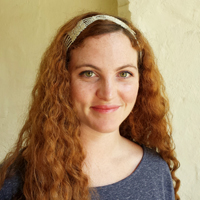More about Allegory of California
- All
- Info
- Shop

Sr. Contributor
Find important Californians in Diego Rivera's Allegory of California.
Diego Rivera had been painting murals in Mexico for almost a decade before accepting his first American commission in 1930 for the San Francisco Stock Exchange building (now The City Club). He’d also joined and been expelled from the Mexican Communist Party as well as been embraced by and then kicked out of Moscow for anti-Soviet politics. To say that Rivera, a man too political for the communists, was a controversial choice to paint a mural in what newspapers of the time called a “citadel of capitalism” understates the irony.
Rivera once said that a great artist “forgets himself and sacrifices himself…if he won’t put down his magic brush and head the fight against the oppressor, then he isn’t a great artist.” Tell me, what part of accepting a $2,500 commission from architect Timothy L. Pflueger for an office building you know will house stock brokers a year after the Great Depression began is sacrifice in the fight against the oppressor? I know $2,500 isn’t a lot of money for a great work of art but when adjusted for inflation that’s a $36,461 commission. This may be cheap for an original Rivera, but it’s still over half of the 2013 U.S. median household income and over 25% higher than the 1930 median household income. I guess that magic brush paints over hypocrisy?
I get it, man. Rivera had married Frida Kahlo in 1929 and a high spending honeymoon trip to San Francisco with the promise of subtly undermining the money crazed American trader sounded really sexy. Maybe too sexy for Kahlo’s taste as it was during the painting of this mural that Rivera met and supposedly bedded the first internationally famous American female, athlete, tennis champion Helen Wills. She’s the big broad you see as Califia, the warrior Queen and symbol of Rivera’s California. Here we see Califia holding up the riches California offers from above the soil and digging deeply below the crust to mine for the treasures below. When investors complained that California should not be presented as any one person (she is a symbol! Not to be represented by a mere mortal!) Rivera defended his choice with this, “California was known abroad mainly because of Helen Willis Moody; …she seemed to represent California better than anyone I knew — she was intelligent, young, energetic, and beautiful.” Translated roughly as, she’s hot.
Wills as California isn’t the only person Rivera drew inspiration for the large L-shaped fresco (it extends from the stairwell between the 10th and 11th floors and onto the ceiling). Here are some other faces and tidbits which represent Rivera’s vision of California:
- Boy with plane: the kid in the center of the composition with the plane represents the future of California (Rivera was wise to note that air travel was gonna be a big industry though not psychic enough to have painted in more apples). Peter Stackpole, the son of artist Ralph Stackpole who got Rivera the job and introduced him to his friend, Ms. Wills, served as the model. He would later become one of Life magazine’s first staff photographers.
- James Marshall: one of those guys panning for gold is James Marshall, THE sawmill operator who reported gold on the American River in 1848 thus beginning the California Gold Rush.
- Luther Burbank: seen here nerding out over some plant. Appropriate since he developed over 800 strains of plants during his career as a horticulturist. Though not from California, this vegetal Frankenstein lived most of his life in Santa Rosa where he did his experiments. He would develop the potato McDonald’s uses for their delicious fries.
- Victor Arnautoff: the stern looking guy in the flannel. Arnautoff was a muralist, communist, and friend of Rivera’s who moved from Russia to California in 1928. He would later spend over two decades teaching art at Stanford University. Appropriately he sits next to a downed redwood tree (yes, Redwoods represent California, Rivera also included this as an intentional nod to his political leanings. Screw you Wall Street!)














